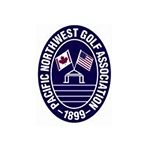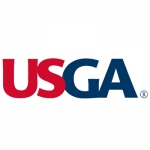Rule of the Month: One-Stroke Penalties
By Sr. Rules Officials: Pete Scholz and Terry McEvilly
Click Here for the Rule of the Month Archive
One-Stroke Penalties
There are three main levels of penalties in the Rules and each level is meant to nullify any potential advantage gained by a breach. While many breaches seem accidental, unintentional and no advantage appears to be gained, any potential advantage must be canceled out to be fair to all the other golfers playing in the competition.
January’s Rule of the Month article focused on actions by the player that resulted in disqualification. This month’s focus is on one-stroke penalties that a player will not only incur because of a breach, but also to take relief in certain situations. As a quick side note, it is important to remember that during a round, a player is responsible for the actions of his or her caddie. Therefore, if a caddie’s actions breach a Rule, the player incurs the penalty. Note to self: choose your caddie wisely.
Test your knowledge regarding one-stroke penalties with the following questions
Questions: True / False
- The player gets one penalty stroke if the ball is not marked when taking relief from an abnormal course condition.
- When a Rule requires the ball to be replaced on its original spot, such as lifting it on the putting green, the player gets one penalty stroke if the ball is lifted without marking its spot.
- When declaring a ball unplayable in a bunker, under penalty of one stroke, the player may put a ball in play outside the bunker, using the back-on-the-line relief option.
- One relief option for a player with interference from temporary water in a bunker allows the player to drop and play a ball using the back-on-the-line relief option outside the bunker under a penalty of one stroke.
- A player’s ball lies in the fairway and while using a distance measuring device to access his or her next stroke, the player accidentally kicks and moves their own ball. There is a one-stroke penalty and the ball must be replaced on its original spot.
- In both match play and stroke play, a player who unreasonably delays play receives a one-stroke penalty for the first breach.
-
When asked to lift your ball in play because it interferes with another player’s play, the ball must not be cleaned.
How many penalty strokes do each of the following players incur? - A player arrives at a red penalty area and there is known or virtual certainty that his or her ball came to rest in the penalty area. The player decides to take lateral relief and determines the relief area based on where the ball last crossed the edge of the penalty area. The player drops a different ball, in the relief area, from waist height and the ball comes to rest and is played from the relief area.
- After finding a ball in deep rough, the player is unable to identify the ball without lifting it. Without marking the spot of the ball, he or she lifts the ball and cleans it beyond what is necessary for identification. The player determines that it is his or her ball and replaces it and plays.
-
On a par three, the player hits to the right of the green and into deep rough. While trying to find the ball, the player accidentally kicks the ball. Since the player was unsure of the exact spot, he or she replaces the ball on its estimated spot, which is near a sprinkler control box. While determining if there is interference from the sprinkler control box, which would give the player free relief, the player again accidentally moves the ball with his or her foot. The player then determines that free relief is not available and replaces the ball from where it was moved and plays the ball onto the putting green. While taking a practice swing near the ball on the putting green, he or she accidentally hits and moves the ball. The player lifts the ball without marking its spot, returns it to the spot from which it was moved and plays it into the hole.
Answers:
- False. Rule 14.1a. When a ball in play is lifted to take relief under a Rule, such as free relief from a cart path or ground under repair, the original spot of the ball doesn’t need to be marked before lifting.
- True. Rule 14.1a. When a player is proceeding under a Rule that requires the ball to be replaced on its original spot, the spot must be marked or the player incurs a one-stroke penalty. When the ball will be put into play in a different spot, such as the situation in question #1, the ball does not need to be marked before lifting it.
- False. Rule 19.3b. A player may declare his or her ball unplayable in a bunker and under penalty of one stroke, may proceed under the back-on-the-line relief option but the ball must be dropped in and played from the bunker. In order for the player to proceed from outside the bunker, the player must add another penalty stroke for a total of two. This additional penalty stroke allows the player to put a ball into play outside the bunker using the back-on-the-line option.
- True. Rule 16.1c(2). Unlike answer #3, for a ball that has been declared unplayable, this player is allowed free relief from the abnormal course condition (temporary water). And one of his or her options includes putting a ball in play outside the bunker, using the back-on-the-line relief option.
- True. Rule 9.4. If it is known or virtually certain that the player moved his or her ball when not allowed to do so, the player gets one penalty stroke and the ball must be replaced. There are several exceptions to this penalty, but the situation presented doesn’t fall under any of the exceptions listed in Rule 9.4b. See question #10 to test your knowledge on the exceptions. Additionally, if the player doesn’t know the exact spot where the ball must be replaced, it must be estimated.
- True. Rule 5.6. Golf is meant to be played at a prompt pace and any player who unreasonably delays play will receive a one-stroke penalty for the first breach. Be aware that a second breach will earn you the general penalty of loss of hole in match play or two strokes in stroke play. A third breach will result in disqualification. In short, keep moving, be ready to make your stroke when it is your turn to play and it is safe to do so. Be aware that your pace of play effects other players on the course.
- True and False. Rule 15.3b(2). The answer is both true and false. To find the correct answer, the location of the ball must be determined. Anywhere on the course, when a player reasonably believes that another ball might interfere with his or her play, he or she may require the other player to lift the ball. The ball must be marked before being lifted and must not be cleaned before replacing it on the original spot. However, if the original spot was on the putting green, the player is allowed to clean it before replacing it.
- Two (2). Rules 17.1d and 14.3b. This player incurs one penalty stroke for taking relief from the red penalty area and another penalty stroke for an improper drop. When a ball is dropped, it must be dropped from knee height. An improper drop may be corrected, but only before a stroke is made at the ball.
- One (1). Rules 14.1a, 14.1c and 1.3c(4). If a player lifts his or her ball under a Rule that requires it to be replaced on the spot, it must be marked prior to lifting. Failure to do so gets the player one penalty stroke. If a player cleans his or her lifted ball when not allowed to do so, the player gets one penalty stroke. However, in the situation presented, both breaches resulted from the single act of lifting the ball and therefore, under Rule 1.3c(4), the player receives only a total of one penalty stroke.
- Zero (0). Rule 9.4b Exceptions. Rule 9.4b states that “If a player lifts or deliberately touches his or her ball at rest or causes it to move, the player gets one penalty stroke. However, there are four exceptions to this Rule, all of which are covered in this situation. 1. There is no penalty for accidentally moving the ball in play while trying to find it. 2. When the ball is moved while applying a Rule, such as determining if relief is available, there is no penalty. 3. Anytime a ball is accidentally moved on the putting green, the ball must be replaced but there is no penalty to the player or anyone else. 4. There is also no penalty for lifting a moved ball that must be replaced. Since the ball must be replaced on a different spot (original spot) than where it lies after being moved, it does not need to be marked before lifting. It is important to note that each time this player moved his or her ball in play, it must be replaced under Rule 9.4.








